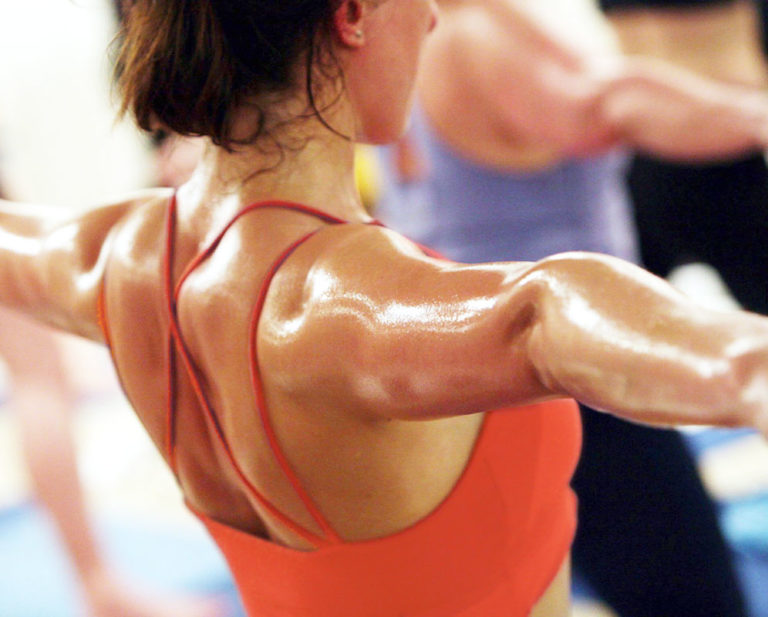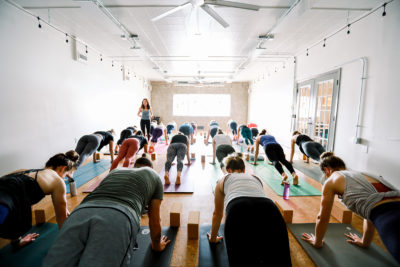Are you experiencing heat loss in your yoga studio? Heating Green here with some helpful tips on what to do.
Heat loss in yoga studios can be serious problem creating difficulty in heating the space to the desired temperature. This can be a huge headache in a commercial yoga studio when you have paying customers who expect their hot classes to be, well…HOT!
We’re going to take a look at some of the common reasons why you might experience difficulty in reaching your desired temperature, evenly heating your space, or heating your space in the time frame you’d hoped for.
Your Windows Might Be Letting Your Heat Escape
Windows are a real challenge to heat retention. They look great, but windows don’t have the same insulative value as a brick and mortar wall.
Windows insulative value are measured in u-values; Measures how well windows can keep heat from escaping from inside a space, or allowing cold air in. The lower the number, the better the product keeps heat in and cool air out. The more windows you have, the older or larger they are, or if the u-value is high, will all present a challenge to heat retention.
Average window u-value is between .20 to 1.20.
Average exterior wall has an R-value between R-13 & R-23.
A quality, modern, double paned window with a u-value of .25 is equivalent to a wall with an R-value of 2.
How do we mitigate heat loss through windows? The old fashioned solution is to add tinfoil to reflect heat back into your space, but be honest, that won’t look good, and you probably want to allow light in. New, high efficiency windows are well insulating, but are very costly and not for everyones budget. So what can you do?
For older windows, be sure the glass and/or frames are well caulked or have proper weather stripping. Consider adding large, heavy, thick curtains which are an affordable and easy solution (Appropriately hung drapery can decrease discomfort due to drafty windows as well as reduce heat loss by up to 25%). Please read more from the US Dept. of Energy.
Concrete & Brick Walls Absorb Your Heat
Bare concrete and brick walls pose a unique challenge when it comes to heat loss in yoga studios. These types of walls act as heat sinks, absorbing much of the heat you’re generating, robbing your space of all that heat you’re paying for.
Concrete and brick have high thermal mass; The ability of material to absorb and store heat energy. Heat generated inside your yoga studio will move through a concrete or brick wall towards the cooler side, drawing all of your heat to the outside, be that outdoors or a neighboring space.
The best way to mitigate heat loss due to concrete or brick walls is with insulation. You can insulate concrete or brick walls from the inside or the outside depending on how you want the wall to look, perform, and what you have access to in your particular space.
If you insulate from the inside, you block the wall from absorbing heat and distributing it out of your studio. If you insulate from the outside, you allow the wall to absorb heat during the day, when your heaters are on, but at night the wall releases heat that it absorbed back into your space.
High Ceilings Steal Your Heat!
High ceilings are a common issues we come across when troubleshooting with a yoga studio struggling with heat retention.
While it’s true that heat from our heaters is infrared, delivered in the form of infrared light waves which project downwards towards the rooms occupants and is not affected by warming or cooling effects, the same isn’t true for warm air. Warm air rises, and even though you might be using infrared heaters, your space is still filled with warm air, generated by either your supplemental heating system, or from heated objects and people in the room. All of that warmed air will rise to the highest point it can, your ceiling. The higher your ceiling, the greater the loss of warm air near occupants in the room.
The best solution to mitigating heat loss due to high ceilings is to add ceiling fan[s] which push warm air down towards the rooms occupants. You may want to consider adding insulation above your ceiling if you do not have any currently, or adding to your existing insulation if it is inadequate. Common R-values for ceilings and attic spaces are R-30 to R-49. Proper insulation helps keep heat from escaping, but ceilings fans keep the heat from reaching your ceiling to begin with.
Lastly, you might consider how much heat you have in your space. If you don’t have enough heat to overcome heat loss due to high ceilings, you might consider adding additional heaters to your space.
Poor/inadequate Insulation
Without good insulation, you are going to pay for it, literally. Insulation is the best and most cost effective way to keep heat in your space. And with yoga studios, you want to keep all the heat you’re paying for!

Insulation is measured in R-values; R-value measures how well a two-dimensional barrier, such as a layer of insulation, drywall, brick walls, etc., resists the conductive flow of heat. The higher the R-value, the more resistant the barrier will be to allowing heat to escape. So what do you do if your space is not well insulated?
Since you’re paying for the heat, you want to hoard as much of it as you can! You will need to assess your space and whether you need insulation or need to increase your existing insulation. If you’re unsure of your insulation type, quantity, or if you have any at all, we strongly recommend hiring a professional to review your studio and guide you on what you need. If you’re concerned about insulation in your space, or thinking about adding, you might want to check out this page on insulation. While aimed at homeowners, it is filled with useful information on how insulation works, R-values, and determining what your needs are depending on where you are located.
Is Your Space Open to Other Spaces (i.e. no walls, half walls, lobby, etc.)?
In our experience, it’s not uncommon for a yoga studio to be open to their lobby or another area. However, we’ve come across situations that created major headaches for studio owners that we feel warrants a discussion.

One case that really stands out was a 1,500 square foot studio located inside a larger space of approximately 4,500 square feet. To make matters worse, this studio had very high ceilings. The yoga studio was only separated from the rest of the space by half-walls made from bookshelves and curtains, around 8’ high, leaving the studio open to the 4,500sf. space. As we noted above, warm air rises, and in this case all the warm air was escaping into the rest of the space, leaving them unable to reach their desired temperature and their studio colder than they wanted.
So what’s the solution?
Simply put, you want your studio to be as closed and sealed as possible. Ideally, your studio is self-contained and not connected to other areas. However, if it is connected to other areas, try to seal it off as best you can. Heavy drapery can be used if it reaches from floor to ceiling, but if you have a space similar to the one above, you’re going to need to build walls and fully enclose your studio.
In summary, the best way to avoid heat loss in yoga studios is..
- Limit the number of windows in your space or make sure they have a high R-value.
- Insulate brick and stone inside and out if possible.
- Add or replace old insulation.
- Consider blocking open hallways and connecting rooms.
- If you have high ceilings use ceiling fans to force warming air back down.
For more questions about improving the heat in your yoga studio please contact us or check out our FAQ.
Written by: Matthew Johnson, VP of Customer Service, Heating Green


